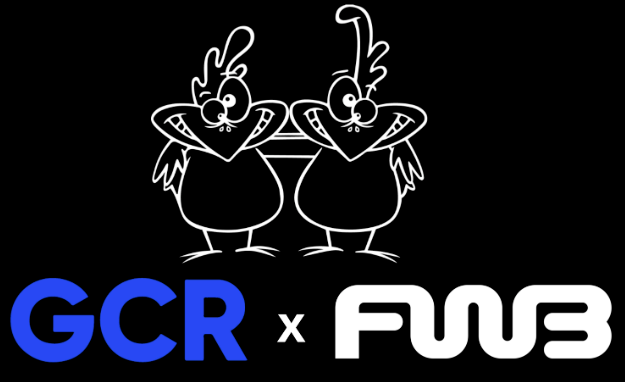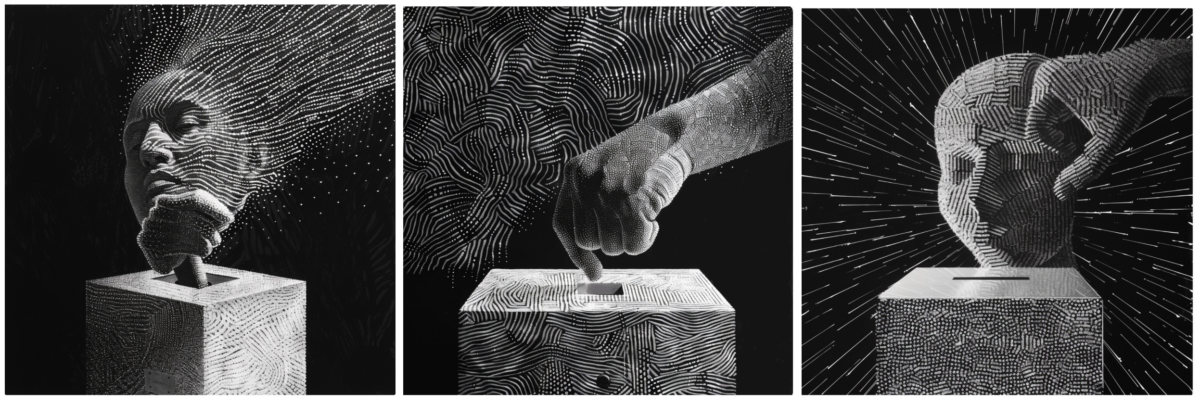Token Evolution: Uncovering Diverse Applications in the Current Digital Landscape

A Collaborative Research Endeavor by Global Crypto Research & Friends With Benefits.
Intro
In this collaborative research endeavor, the Global Crypto Research (GCR) and Friends With Benefits (FWB) unite to present a comprehensive examination of Decentralized Autonomous Organization (DAO) tokens and their contemporary landscape. Despite the burgeoning interest and investment in DAO tokens, their utility and application remain constrained by a spectrum of technical, regulatory, and operational challenges. Our primary objectives are to explore potential use cases for DAO tokens and propose a roadmap for their future evolution. Through this collaborative inquiry, we seek to foster a deeper understanding of DAO tokens, catalyzing innovation and facilitating more robust, versatile, and equitable applications in the digital economy.
Current Status
Many DAOs’ tokens are used in a variety of ways to help incentivize, coordinate and govern the community.
The financial aspect of digital assets can cut both ways. Whether positive or negative, the value of a token affects how the project is perceived. When a token’s value is on the rise, it generates a feedback loop of positive sentiment. Conversely, when a token loses value, it negatively impacts the morale of the community who have a financial stake in it and sends a negative signal to the wider industry. Therefore, it is crucial to create a token that maintains a balance between supply and demand. We explore various use cases for tokens to identify the most effective ways to structure them moving forward.
A DAO’s token is often its most important financial resource. The majority of a DAO’s financial reserves are typically comprised of its own token. These tokens can be utilized to reward contributors, cover operational costs, and support the growth and operation of the DAO. However, as previously mentioned, it is crucial to establish token utility in order to balance token expenditure.
Access and Membership:
Ownership of a token can be multi-dimensional, in many cases representing the ability to participate in the governance of a project or community treasury, and in other cases representing connection to an overarching community. For Friends With Benefits, owning a minimum of 75 $FWB is a prerequisite to applying to join a private and token-gated Discord server that serves as the community’s private ‘town square’ where members share information, organize projects, and coordinate on community governance. Additionally, FWB has hosted events that require holding smaller amounts of $FWB, effectively broadening the DAO’s membership beyond fully approved Discord server members. Requiring participants in a community to own tokens is an effective method to generate initial demand for the token and align interests. However, this approach is not sustainable as a standalone strategy because it relies on a ‘buy-once-and-hold’ approach that does not lead to recurring demand for the token on its own.
Governance:

Tokens frequently grant governance rights which give the authority to propose and vote on matters pertaining to various aspects of the DAO. This can include decisions regarding new organizational structures, initiatives, partnerships, team compensation, and even the distribution of treasury assets. Certain tokens bestow voting rights without any additional obligations, while other token designs require that the token is “locked up” for a period of time to gain voting rights. For instance, FWB and GCR tokens can be utilized for voting purposes without any locking periods.
In contrast, Curve’s popular vote-escrow model operates differently. In this model, CRV tokens are locked for a period of up to 4 years to acquire voting power. The longer the CRV tokens are locked away, the greater voting power the holder obtains.
Unfortunately, most DAOs only have sporadic proposals to vote on and voter participation rates are usually quite low. Charmverse estimates that voter participation is in the single digits for the majority of DAOs.
Value Accrual:
One way to generate demand for a token is for it to be a financial asset worthy of investment or speculative demand. This is most prevalent with DAOs that govern DeFi protocols. For instance, Curve Finance has a revenue-sharing mechanism akin to a dividend. Other DAOs have adopted a buyback and burn mechanism as a way to accrue value.
These value accrual mechanisms usually work for projects that can generate fees or revenues. Community DAO tokens may not have this option available to them. Token issuers should perform a legal analysis to ensure that the value accrual is in compliance with applicable securities laws.
Staking:
Some projects offer the option to stake your tokens, usually to earn a revenue stream for contributing economic resources to the project. For example, Aave allows users to stake AAVE tokens into its safety module in exchange for a share of protocol fees. By staking AAVE, you are providing financial support to the project by acting as a backstop in the event the protocol incurs bad debt.
However, poorly designed staking mechanisms arise when the staking action doesn’t provide any economic purpose and/or the yield paid to stakers results in dilution to the token’s circulating supply. In such a case, staking has no utility other than to incentivize token holders not to sell. Crypto-personality, Cobie, previously spoke out against such staking designs. Since the last bull-market, many projects have eschewed dilutive yields in favor of “real yields” or yields generated by true economic activity.
Potential Use Cases
In the previous examples, we covered the state of token utility. However, we are still in the early phases of experimentation. In the following sections, we explore a number of different options for DAOs to deploy their tokens in innovative ways.
Launch Custom Chain:
A potential use case would be to launch a chain specific to a community. These blockchains could generate transaction fees which would generate demand for the token. There are a number of services and SDKs that make launching a custom blockchain easier but it still is a large undertaking. To justify the costs of launching and maintaining a blockchain, it is essential to have a sufficiently large community with active participation. Although launching a chain provides greater control over the user experience for existing members, it also introduces challenges in onboarding new members, such as the need for new wallets, gas tokens, and bridges. All these factors must be carefully considered.
Token Migration:
Many DAOs originally launched on Ethereum mainnet. Gas fees on Ethereum can become exorbitant which creates a barrier for growing a community and trying more experimental token designs and mechanisms. While there is certainly some prestige associated with using OG smart contract chain, migrating the token to a cheaper L1 or L2 could help unlock new use cases. This is a good alternative to launching a custom chain which has high costs to maintain.
Create Token Utility Around Core Community Activities:
Creating additional utility for tokens is important to sustain demand for the token. For example, Global Coin Research (GCR) recently passed a proposal that allows members to buy-down the carry that they are charged on joint investments. If a member is bullish on an early stage investment that they are entering into through GCR, they can opt to purchase additional GCR tokens to be burned in exchange for reduced fees. The motivation behind this mechanism was to tie additional token utility and demand to the quantity and quality of early-stage investments that GCR facilitates.
Unbundle the Token:
Are there too many purposes bundled into a token? In Web2, each use case has its own separate corresponding asset. If you want to own equity in a company, you buy stock. Sometimes there are even different voting share classes. Starbucks gives you loyalty points, not an ownership stake, for frequenting their coffee shop. In Web3, all use-cases are bundled into a single token. We’d argue this is a good thing – users are stakeholders too and should have ownership in an enterprise that their usage contributes to. But does one token need to rule them all? Or does that limit growth? With the rise of Semi Fungible Tokens, it is worth exploring different dynamic use cases.
Airdrop to your Community:
Many Web3 communities are more than just a club. There is a driving mission to advance the Web3 industry. If successful, this mission creates value in the form of incubated projects. The value of these incubated projects can accrue to the treasury which the tokens have governance over, but what if you airdrop the value to your token holders? Crypto Oracle Collective (COC), a DAO co-founded by Lou Kerner of Crypto Mondays, intends to do just this. They will start with an airdrop of Crypto Monday tokens but plan to continue the practice with projects incubated by COC over time.
Reward and Gamify Engagement:
Community tokens should be easy to obtain in order to create a broad distribution and attachment to the token and community. People who are curious about a community could get a small gift of a token to start the relationship. Members who show up to IRL events should be rewarded with a small amount of tokens. Communities should explore rewarding and gamifying engagement. Higher token amounts would indicate or confer a higher social status within the community.
It should be noted that token farming can kill communities and there should be some lock up period with an innovative tracking of contributions to the community to unlock. This way, first does not mean getting the largest bag, but can actually reward people to give to the community and reallocate people’s supply who are just being extractive.
In terms of rewarding larger impact contributions, the Optimism PGF (Public Good Funding) model could be a good approach to adopt. Community members would be incentivized to make a meaningful impact because they know they could be retroactively given a reward for their contribution.
Of course, gifting tokens could lead to increased sell pressure. The flipside is that by making micro-rewards for small engagement, it’s not as meaningful to sell the token. The hope is to create an emotional attachment to the community through the token. Some people may still sell, but the mechanism can self-select community participants who don’t sell and are therefore more aligned with the long-term vision of the community.
Wrapping It Up
The advent of tokens has created one of the best coordination mechanisms in society. Tokens incentivize and enable complete strangers to pool resources into a shared mission. That being said, we are still very early in the evolution of tokenized communities and it behooves us all to continue to play around and experiment with token mechanisms and use cases. We are still early.
A big thank you to our friends who provided input to this piece:
- Tina He (Station Labs)
- Cooper Turley (Coop Records)
- Lou Kerner (Crypto Oracle Collective)
- Greg Bresnitz (Friends With Benefits)
- Jonathan Man (Global Coin Research)
The GCR Research Team is a group of dedicated professionals with extensive knowledge and expertise in their field. Committed to staying current with industry developments and providing accurate and valuable information, GlobalCoinResearch.com is a trusted source for insightful news, research, and analysis.
Disclaimer: Investing carries with it inherent risks, including but not limited to technical, operational, and human errors, as well as platform failures. The content provided is purely for educational purposes and should not be considered as financial advice. The authors of this content are not professional or licensed financial advisors and the views expressed are their own and do not represent the opinions of any organization they may be affiliated with.












